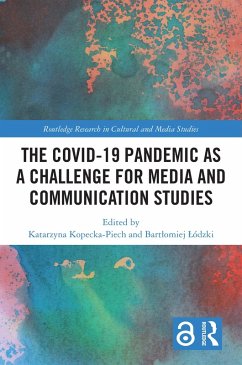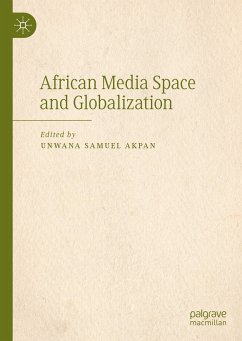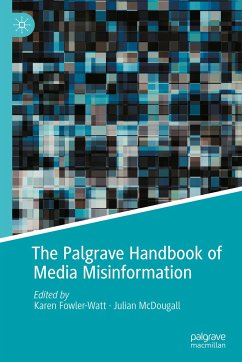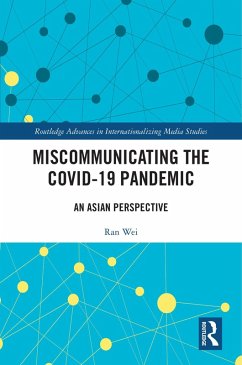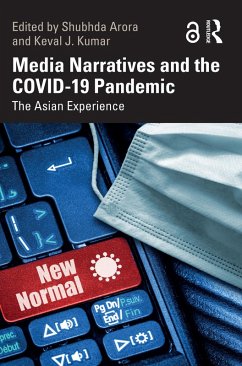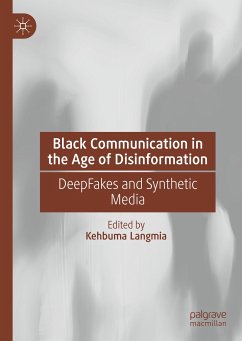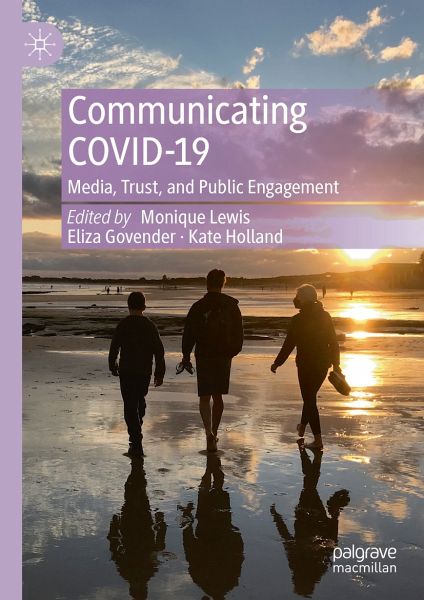
Communicating COVID-19 (eBook, PDF)
Media, Trust, and Public Engagement
Redaktion: Lewis, Monique; Holland, Kate; Govender, Eliza
Versandkostenfrei!
Sofort per Download lieferbar
104,95 €
inkl. MwSt.
Weitere Ausgaben:

PAYBACK Punkte
52 °P sammeln!
This edited collection, follows on from 'Communicating COVID-19: Interdisciplinary Perspectives' (2021) and brings together different scholars from around the world to explore and critique the ongoing advances of communicating COVID, two years into the pandemic.Pandemic life has become familiar to us, with all its disruptions and uncertainties. In the second year of COVID, many societies emerged well attuned to new waves of infections, while others, having initially demonstrated 'gold standard' responses, regressed, either through a premature end to public health restrictions or challenges aro...
This edited collection, follows on from 'Communicating COVID-19: Interdisciplinary Perspectives' (2021) and brings together different scholars from around the world to explore and critique the ongoing advances of communicating COVID, two years into the pandemic.
Pandemic life has become familiar to us, with all its disruptions and uncertainties. In the second year of COVID, many societies emerged well attuned to new waves of infections, while others, having initially demonstrated 'gold standard' responses, regressed, either through a premature end to public health restrictions or challenges around vaccine rollouts. In many countries, bitter social divisions have arisen over mask-wearing, lockdowns, quarantine and vaccination.
To better understand the ever evolving communicative landscape of COVID-19, this collection shares updated perspectives from the disciplines of media and communication, journalism, public health and primary care, sociology, and political and behavioural science, addressing the major issues that have confronted communicators, including vaccine hesitancy, misinformation, and the mobilisation of community driven communication responses as restrictions eased in various parts of the world.
Pandemic life has become familiar to us, with all its disruptions and uncertainties. In the second year of COVID, many societies emerged well attuned to new waves of infections, while others, having initially demonstrated 'gold standard' responses, regressed, either through a premature end to public health restrictions or challenges around vaccine rollouts. In many countries, bitter social divisions have arisen over mask-wearing, lockdowns, quarantine and vaccination.
To better understand the ever evolving communicative landscape of COVID-19, this collection shares updated perspectives from the disciplines of media and communication, journalism, public health and primary care, sociology, and political and behavioural science, addressing the major issues that have confronted communicators, including vaccine hesitancy, misinformation, and the mobilisation of community driven communication responses as restrictions eased in various parts of the world.
Dieser Download kann aus rechtlichen Gründen nur mit Rechnungsadresse in A, B, BG, CY, CZ, D, DK, EW, E, FIN, F, GR, HR, H, IRL, I, LT, L, LR, M, NL, PL, P, R, S, SLO, SK ausgeliefert werden.



